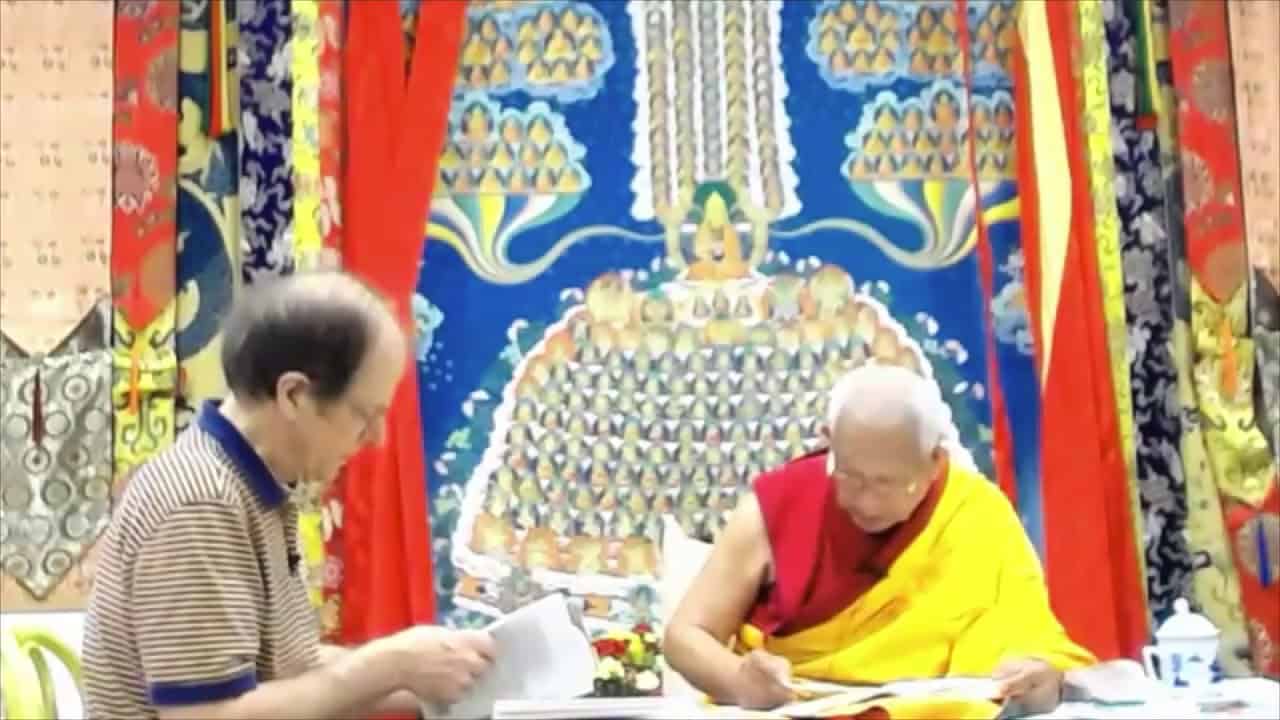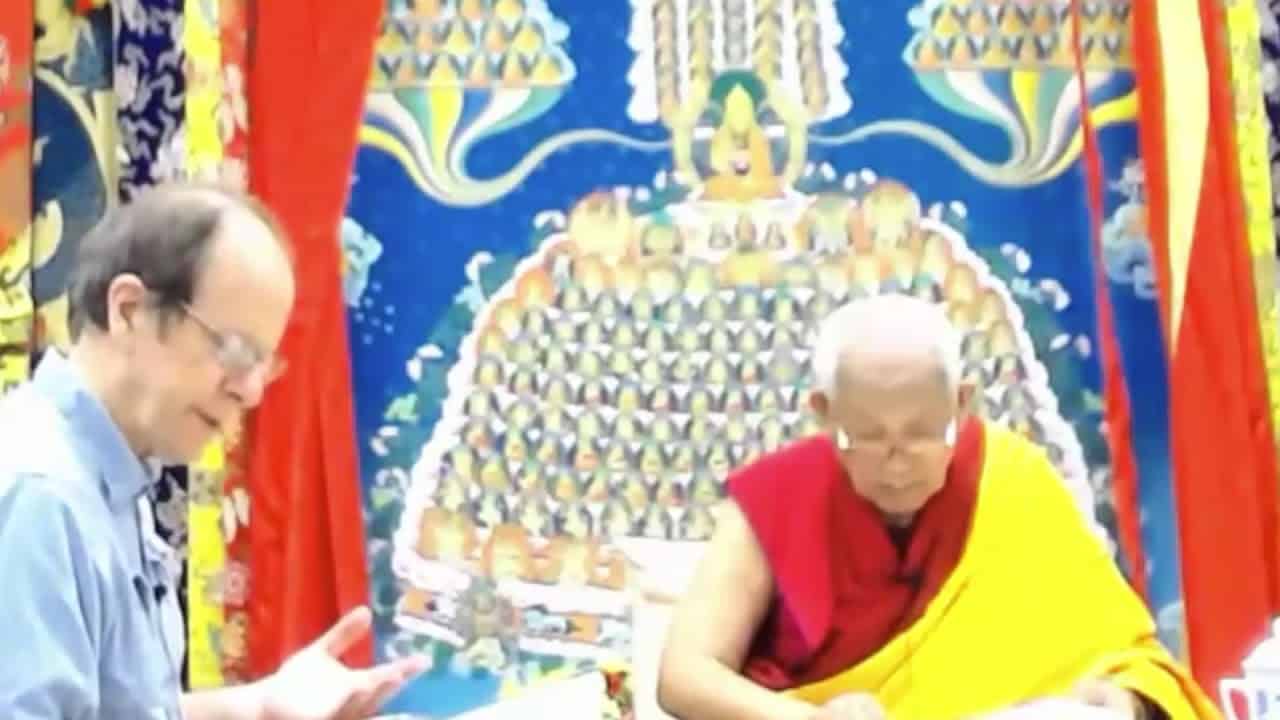Chapter 15: Verses 360-365
Part of a series of teachings on Aryadeva's 400 Stanzas on the Middle Way given on an annual basis by Geshe Yeshe Thabkhe from 2013-2017.
- How external and internal reality is like a magician’s illusion
- Examples showing how ignorance prevents us from seeing impermanence and lack of inherent existence
- Refutation of inherently existent characteristics by examining if these can occur consecutively or simultaneously
- Views on production, duration and cessation held by lower Buddhist and non-Buddhist schools
- Refutation through the consequence of infinite regress if the characteristics existed inherently
- Refutation by examining whether defining characteristics are inherently one with or inherently different from the object
- Refuting that production is inherently existent because the agent of production exists inherently
- Refuting inherent production of functional and nonfunctional phenomena
Geshe Yeshe Thabkhe
Geshe Yeshe Thabkhe was born in 1930 in Lhokha, Central Tibet and became a monk at the age of 13. After completing his studies at Drepung Loseling Monastery in 1969, he was awarded Geshe Lharampa, the highest degree in the Geluk School of Tibetan Buddhism. He is an emeritus professor at the Central Institute of Higher Tibetan Studies and an eminent scholar of both Madhyamaka and Indian Buddhist studies. His works include Hindi translations of The Essence of Good Explanation of Definitive and Interpretable Meanings by Lama Tsongkhapa and Kamalasila's commentary on the Rice Seedling Sutra. His own commentary, The Rice Seedling Sutra: Buddha’s Teachings on Dependent Arising, was translated into English by Joshua and Diana Cutler and published by Wisdom Publications. Geshela has facilitated many research works, such as a complete translation of Tsongkhapa’s The Great Treatise on the Stages of the Path to Enlightenment, a major project undertaken by the Tibetan Buddhist Learning Center in New Jersey where he teaches regularly.


